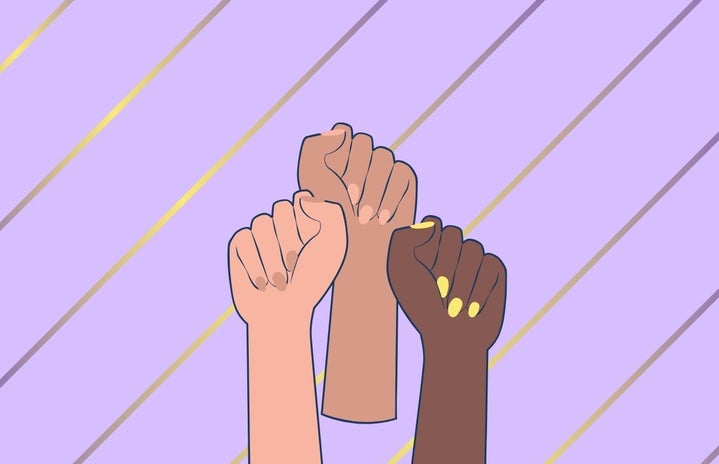In honor of Women’s History Month, let’s talk about feminism. Specifically, I want to focus on intersectional feminism not only because I have a passion for women’s and gender studies, but also because the term intersectionality may be considered feminist jargon to those who are unfamiliar with it. According to activist Kimberlè Crenshaw, a law professor at UCLA and Columbia Law School, intersectionality is how gender, race, sexual orientation, and other identity markers overlap to determine experiences privilege or discrimination.
Crenshaw came up with her theory of intersectionality based on the cross between sexism and racism in 1989. She noted that discrimination does not only occur on the basis of gender identity or on the basis of race. In other words, oppressors do not choose whether they will oppress someone based on gender or race. They oppress based on a combination of identities: gender and race. Crenshaw uses the example of a black woman’s plight. She made the claim that a black woman will experience discrimination differently. Not only in comparison to a white man, but also in comparison to a black man and a white woman. Her theory can and should be applied to the plights of individuals of any race, ethnicity, sexual orientation, ability status, or socio-economic standing because as Crenshaw states, different people have different experiences with discrimination in society.
For example, intersectionality can be used to understand the gender wage gap. Women face the glass ceiling in the workforce, making 79 cents to a man’s dollar, as of 2019. However, black women are only making 61 cents to that same dollar earned by white men working the same job. Similarly, Native American and Latina women women are earning 58 cents and 53 cents respectively. Real feminism is when we recognize that social and economic discrimination arises from the possible intersections of race and gender, not just gender alone or race alone.
Issues of discrimination and oppression also arise for LGBTQIA+ individuals. Sexual minorities face discrimination in the form of homophobia, transphobia, and other derived phobias relating to their sexual orientation. Let’s rewind all the way back to the 1969 Stonewall Riots in New York City. The Stonewall Inn, a gay nightclub, was the hotspot for the community, and it was also a hotspot for police raids with goals to prevent any homosexual activity. Needless to say, things got violent on June 28, 1969. Crazy, right?
Well, what’s even crazier is that there is an entire movie called Stonewall depicting the riots that gives credit to a completely fictional white man for starting the revolution. In reality, black and Latina, trangender individuals like Marsha P. Johnson and Sylvia Rivera are the ones who deserve the credit. Critics say the movie white-washed the historical event and discredited the true activists because they are transgender women of color. Today, LGBTQIA+ people of color face oppression on the basis of sexual orientation, gender identity, and race. Intersectionality recognizes the issues that the LGBTQIA+ community faces as LGBTQIA+ individuals while simultaneously recognizing that the community is not only made up of white, gay men.
Now that we know what intersectionality is, we need to talk about what it is not. Intersectional feminism is not about placing marginalized, minority groups at the top of the unwritten, but prevalent social hierarchy. No intersectional feminist is saying that non-white, non-cisgender, non-heterosexual individuals are better than those who are white, cisgender, and heterosexual. Additionally, intersectionality is not when minority individuals play victim to social injustices. Instead, intersectionality works to bring minority individuals up to the level of privilege the white, cisgender, heterosexual individual possesses. Just like how feminism is the political, economic, and social equality of the sexes, intersectional feminism recognizes the inclusion of minorities in the movement.
Feminism gets a bad reputation because most self-proclaimed feminists think that women’s issues should be the first and only issue feminism focuses on. Don’t get me wrong, an important part of feminism is gender equality. However, using gender inequality as a focal point for the movement takes away from the significance of combating the other systematic social issues engraved in our patriarchal, heteronormative, white-washed society.
The intersectional feminist motto, coined by Flavia Dzodan, states that if your feminism isn’t intersectional, it isn’t actually feminism. Institutional, societal change cannot occur if feminism does not include all people. I encourage my fellow self-proclaimed feminists to make their feminism intersectional by recognizing and including the battles of all marginalized groups in the fight for equality.


